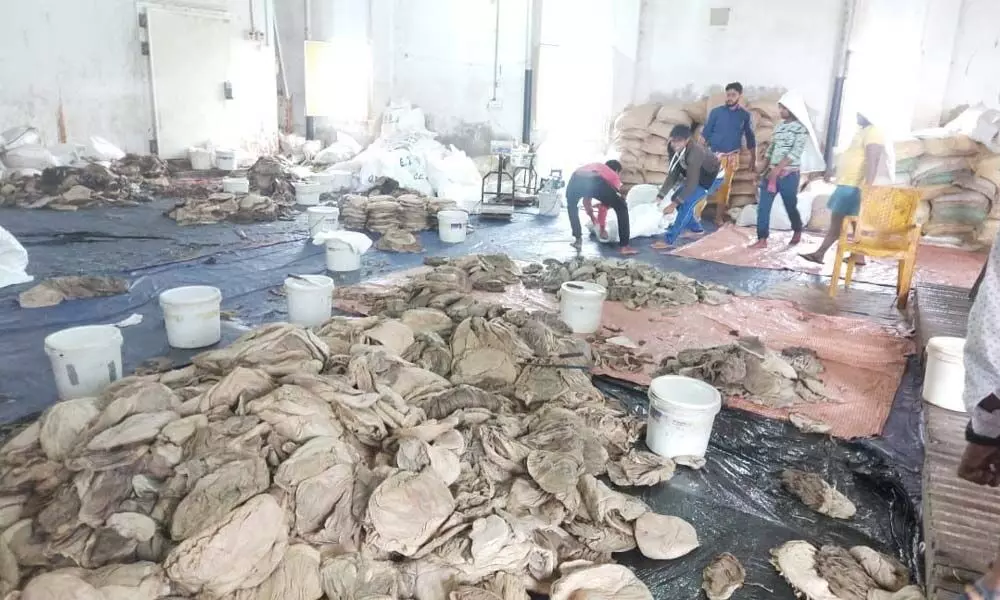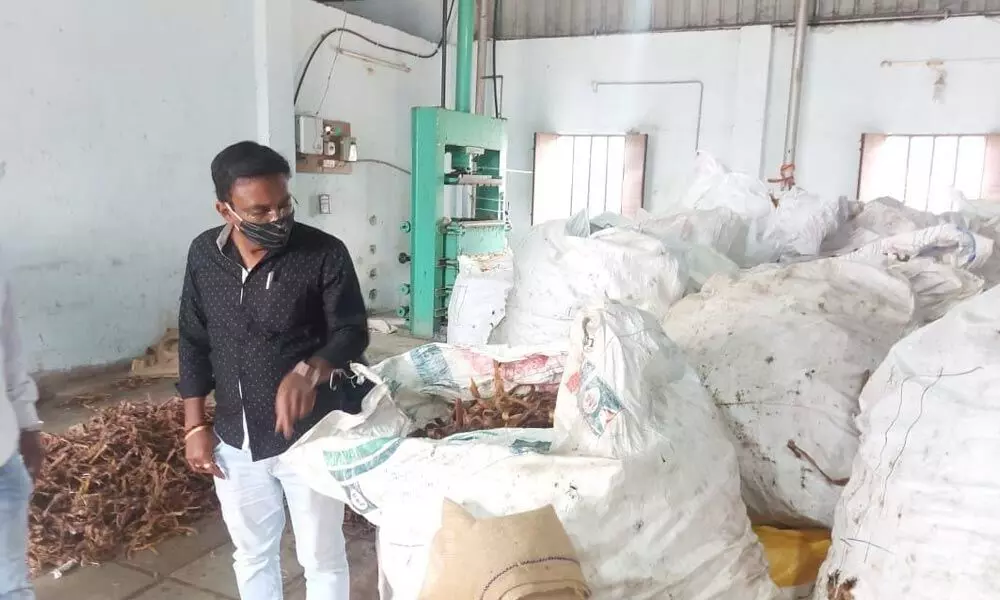Live
- Indian Army Day 2025: A Day to Remember Our Selfless Heroes
- 'Which country?': Sandeep Dikshit mocks Arvind Kejriwal's claims of 'saving the nation'
- IAF carries out high-precision rescue operation from volcanic Narcondam Island in the Andamans
- Spurs need to start winning games, there’s no better place to start vs Arsenal: Postecoglou
- Congress guarantees better law and order in Delhi
- PM Modi to dedicate three cutting-edge naval combatants to nation on Wednesday
- Ethiopia repatriates 164 citizens from Lebanon
- CM Atishi discloses Rs 76 lakh assets, up Rs 17 lakh from 2020 polls
- Tovino Thomas' Identity Becomes Mollywood's First Hit of 2025
- Australian MP at Udupi Krishna Temple, Highlights Strengthening India-Australia Ties
Just In
Jalpally: Slaughterhouse wastes pose alarming threat


Slaughterhouse wastes pose alarming threat
Illegal animal waste processing units thrive in residential areas of Jalpally
Jalpally: Illegal animal visceral organs processing units are mushrooming in the city suburban area of Jalpally, causing pollution and nuisance to local residents. On Wednesday when the officials of Jalpally municipality raided and sealed a few units in Shahjahan Colony that were found to be operating without proper permissions.
Jalpally Municipal Commissioner GP Kumar along with his staff carried out raids on five factories and acted against them. However, there are some more such units whose activities need to be checked, say the residents. The Commissioner said, "These factories are running without proper permissions from the municipality and are found floating all the rules laid down for food processing industries. During the raid, we even found that some are packing animal waste in packets with the manufacturing date mentioned as February 2021. We sealed a few units and also identified some others. Soon we will form a team comprising officials from different departments and take action against them."
The animal waste, extracted from slaughterhouses reached these factories at Jalpally where it is segregated, processed and exported. As following prescribed norms and setting up required facilities involve costs, slaughterhouses largely dispose of wastes off illegally. Factories illegally operating and located amid the densely populated areas, mainly slum areas, they escape from the net of civic body and PCB officials.
Warning the industries of strict action, he said they would send samples to laboratories and ascertain what actually they were processing. These industries are not allowed here to operate in residential areas and play with the health of people. "We have already informed higher officials about the unhealthy practices at these factories," he informed.
ILL-EFFECTS OF ANIMAL WASTE
♦ The most significant environmental issues associated with slaughterhouse operations are water consumption, emissions of high organic strength liquids to water and the energy consumption associated with refrigeration and water heating
♦ The units follow low hygiene standards posing major public health and environmental hazards due to indiscrete disposal of waste and highly polluted effluent discharge.
♦ High water consumption and high BOD, COD and TSS concentrations arise during slaughter and carcass dressing. Excessive use of water is an environmental issue in itself.
♦ Blood has the highest COD strength of any liquid effluent arising from animal slaughterhouses. Municipal sewers get choked or overloaded if wastes from slaughterhouses are discharged without basic treatment.
♦ Solid waste generated from slaughterhouses such as cow dung, intestine, solids from effluent treatment plant are unscientifically disposed of which attract flies, dogs and other vermin, lead to leachates problems, contamination of surface and groundwater, thus endangering public health.
♦ Odours emanate from blood storage and handling, slurry, occupied lairages and inedible offal storage are reported to be the most problematic. Yard areas, unwashed by-products containers and treatment plants, including initial screening of solids, also cause potential problems.




© 2025 Hyderabad Media House Limited/The Hans India. All rights reserved. Powered by hocalwire.com






